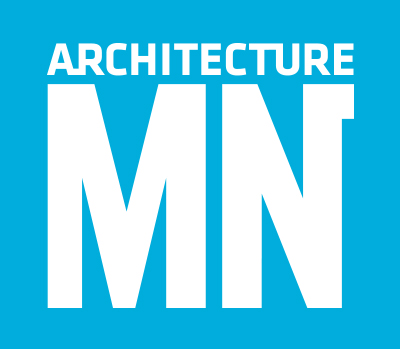Rochester’s ambitious Destination Medical Center gets a kickstart with a building designed to incubate innovations in healthcare technology
By Joel Hoekstra
This past summer, a four-story building opened its doors on the site of a former parking lot a few blocks south of the Mayo Clinic campus in Rochester. Much of the real estate in the city’s downtown is owned by the famed clinic, but this 90,000-square-foot structure, One Discovery Square, was developed by Mortenson, with the enthusiastic support of both the clinic and the local community. Its purpose? To foster innovations that could put Rochester on the med-tech map. After all, why should all the attention go to places like Boston or Silicon Valley when Mayo’s wide-ranging expertise is right here in southeastern Minnesota, waiting to be tapped?
Mayo was central to the project from the start. It promised to lease a large chunk of the facility, and teams from its advanced diagnostics, biomedical imaging, and regenerative medicine departments moved in this summer. What’s more, Mayo and city leaders viewed the project as crucial to their overall effort to develop the commercial, residential, and cultural resources at Rochester’s core.
In 2013, the state had targeted the city as a potential economic engine and authorized a range of public investments to make Rochester a global powerhouse. A 20-year, $5.6-billion economic-development plan dubbed the Destination Medical Center (DMC) was drawn up to guide the creation of public-private partnerships that would help realize the vision. Among the priorities identified early on was the need for collaborative space where Mayo experts could rub shoulders with entrepreneurs, sparking new products, services, and companies.
“One Discovery Square is a critical component of our overall plan,” says DMC executive director Lisa Clarke. “Every time I walk into the building, I’m energized. You can tell it’s built for collaboration. We want people to connect with one another on a personal and professional level.”
LOOKING FOR BLUEPRINTS
Mortenson has a longstanding connection to Mayo, says development manager Brent Webb. But constructing One Discovery Square required a slightly different approach, one that would accommodate and reflect Mayo’s culture but also allow startups and other organizations to display their approaches and strengths. “We wanted a particular tenant mix,” says Webb. That meant wooing small and large companies, manufacturers, and educational institutions. As of late summer, the facility was 85 percent leased. In addition to Mayo, tenants include Phillips, Boston Scientific, and the University of Minnesota Rochester.
To design the facility, Mortenson tapped RSP Architects, a Minneapolis firm with a long-standing office in Rochester. RSP principal Jon Buggy, AIA, and his team worked with stakeholders to evolve a vision for the project that would align with Mayo’s and Mortenson’s needs, and with potential requirements for future tenants. “Transparency and flexibility were key,” says Buggy. “The space had to foster chance encounters and conversation. All stakeholders envisioned a building that deeply engaged the community while also providing secure and technically sophisticated space in which to innovate and advance healthcare.”
With any kind of building project, it helps to have knowledge of what works and doesn’t work. But biomedical-innovation facilities are a fairly new breed of building, so RSP sought a partner with experience in the area. The collaborator they engaged was HOK, a global design firm that helped shape the Cortex Innovation Community in St. Louis. The 200-acre campus, which includes several buildings and recreational spaces and even a hotel, is home to hundreds of companies hoping to build business by collaborating with Washington University, St. Louis University, the University of Missouri–St. Louis, and local medical centers.
“Cortex was the tip of the spear,” says HOK senior principal Eli Hoisington, AIA. “When we started that project, no one knew what a medical innovation center was.”
SPACES FOR SOCIAL INTERACTION
Innovation begins with interaction, so One Discovery Square is filled with spaces and features that prompt connections. Extensive use of glass inside and out promotes transparency. Rather than locking down each floor and limiting access, the design opens up public circulation whenever possible. “Security is important,” says Hoisington. “But at what point are you simply cordoning people off from each other?”
An airy double-height lobby with a wide, auditorium-style staircase allows visual connections within One Discovery Square. Comfortable seating throughout the entry space and a coffee shop connected to the lobby tempt tenants and visitors into lingering in the public spaces. Installations by local artists provoke conversation and inspire creativity. “The living-room spaces encourage people to work outside the office,” says Buggy. “And that creates opportunity for outside connections.”
Programming is also important. A varied schedule of events—for example, workshops on how to attract venture capital—draws tenants into the public spaces and further encourages creative interaction. A drop-down screen in the lobby takes advantage of the staircase seating. The entry plaza plays host to early-morning yoga in summer.
Activities spill outside at the other end of the building as well, where a slightly raised terrace furnished with colorful seating has become a popular lunch spot. On the exterior, alternating bands of glass and fiber-cement paneling dramatize the building’s strong horizontality; the panels are painted in three shades of cool gray, with rust-orange soffits adding a sophisticated punch of color.
“It was really clear early on that this project needed to be different, something more contemporary and transparent than your typical building in Rochester,” says Buggy. “The phrase we came up with was ‘science on display.’ The transparent entry with the tiered activity taking place inside, including community-oriented presentations and mixers, and the coffee shop spilling out onto the plaza—it all makes for a very public building.”
In the end, of course, nobody can predict the ventures that One Discovery Square will generate. But DMC director Clarke is confident that the building will birth a wealth of ideas. “Collaboration leads to innovation,” she says. “And there’s nothing better for starting collaboration than looking at someone across the table, or standing next to them in line for coffee, and sharing ideas.”
ONE DISCOVERY SQUARE
Location: Rochester, Minnesota
Client: Mortenson Construction
Architects: RSP Architects and HOK
Principal-in-charge: Jon Buggy, AIA
Project lead designer: Michael Browning
Energy modeling: Michaud Cooley Erickson
Landscape architect: Coen+Partners
General contractor: Mortenson
Size: 90,000 square feet
Completion: March 2019
Photographer: Gaffer Photography


